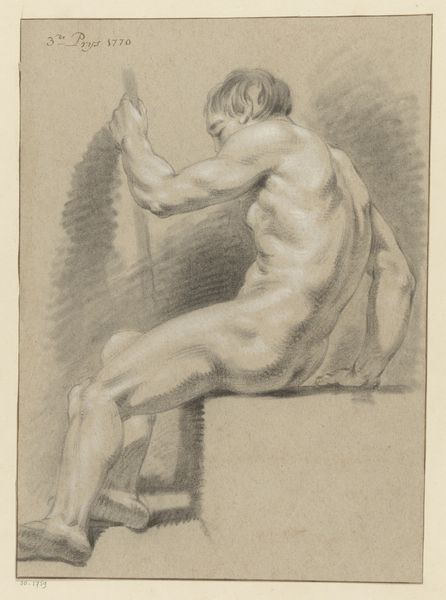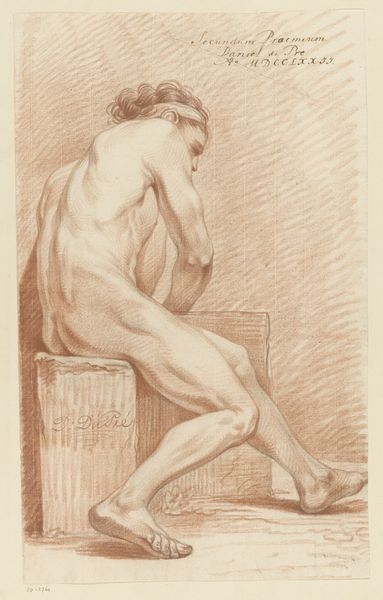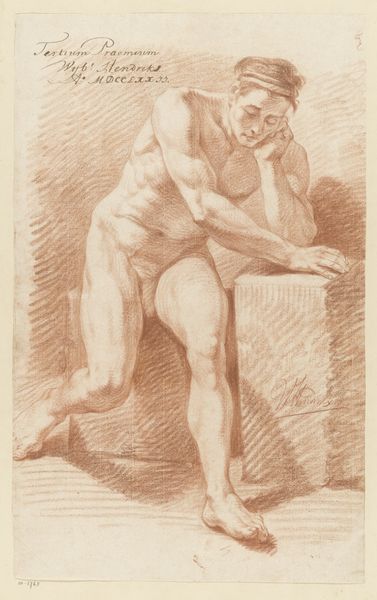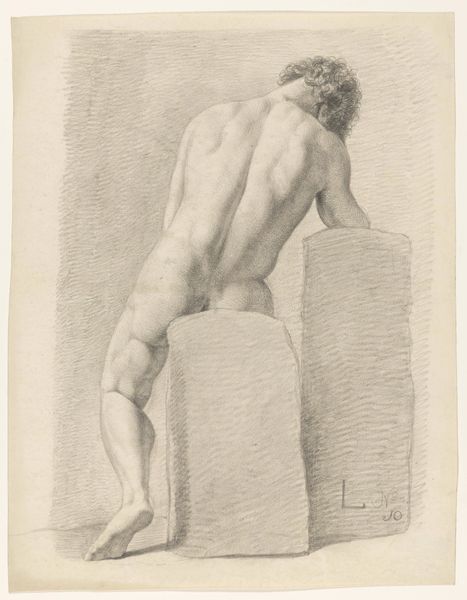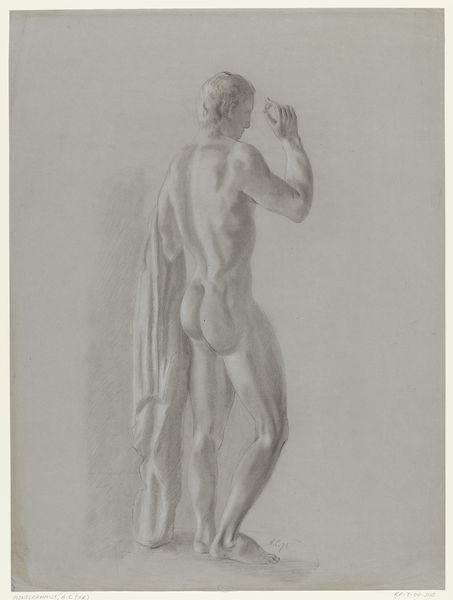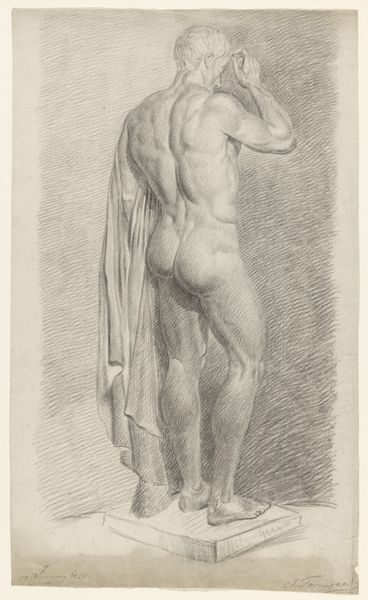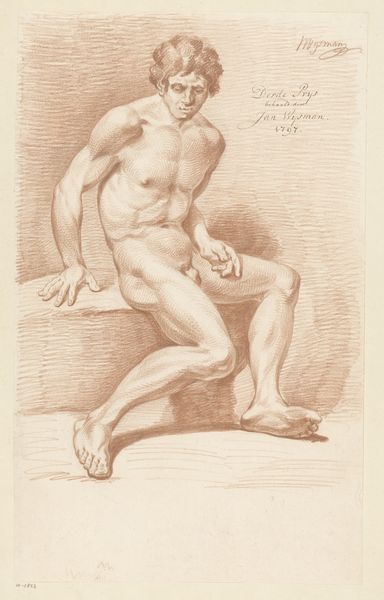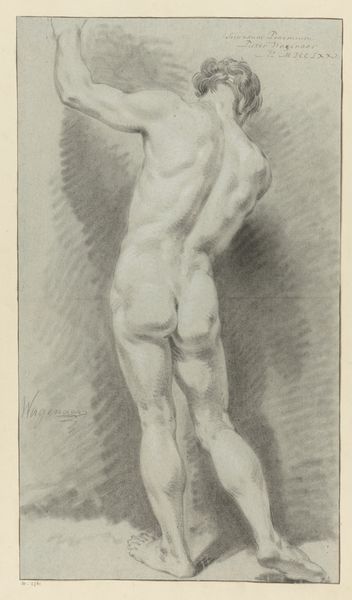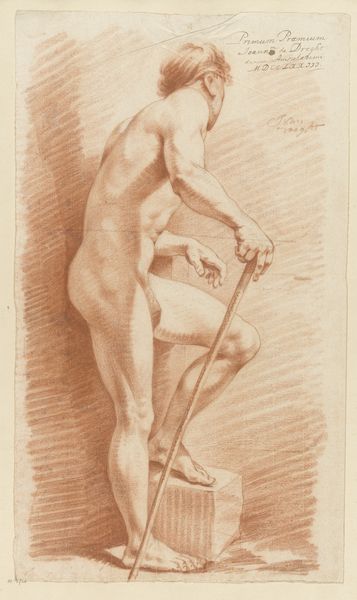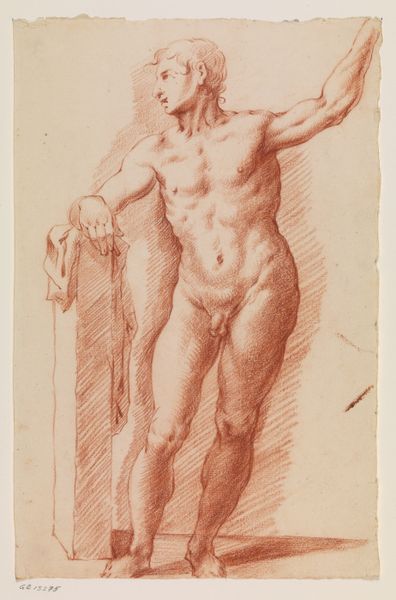
Zittend mannelijk naakt, op de rug gezien (2e prijs 1785) Possibly 1785
0:00
0:00
drawing, pencil
#
portrait
#
pencil drawn
#
drawing
#
neoclacissism
#
pencil sketch
#
charcoal drawing
#
figuration
#
pencil drawing
#
pencil
#
portrait drawing
#
academic-art
#
nude
Dimensions: height 559 mm, width 329 mm
Copyright: Rijks Museum: Open Domain
Editor: This drawing by Hendrik Voogd, titled "Seated Male Nude, Seen from the Back," possibly from 1785, is created using pencil. I'm struck by the detailed musculature and the raw physicality conveyed. What can you tell us about the historical and material context of this piece? Curator: Well, let’s consider the socio-economic context of 18th-century art academies. The labour involved in producing such a meticulous drawing would have been extensive. Think about the artist's access to materials – high-quality paper, pencils – commodities in themselves, indicative of a certain level of patronage or social standing. Editor: So, access to materials was indicative of social standing for the artist themselves? Curator: Exactly. But more than that, think about *who* is being depicted. The male nude, laboriously rendered in pencil – is this a celebration of human form, or is it about exerting power over that form through representation and possession? The labor of Voogd in production, is being put to the service of studying and mastering the body. Who gets to represent whom, and for what purpose? This isn't simply an innocent sketch; it’s laden with social and economic implications. Editor: It's interesting to think about art production itself as a form of labor, particularly in the 18th century and its association with economics. Curator: And even the ‘2nd prize’ mentioned in the title implies a hierarchy, a competitive market within the academy itself. The award is the symbolic prize, but in practice the artwork embodies economic exchange itself, the product and instrument of a stratified cultural economy. Now does that change how you look at this artwork? Editor: It does. It reframes my understanding. The material and labor aren't just means to an end; they're integral to understanding the art's function within a larger social framework. Thanks, that’s quite illuminating.
Comments
No comments
Be the first to comment and join the conversation on the ultimate creative platform.
